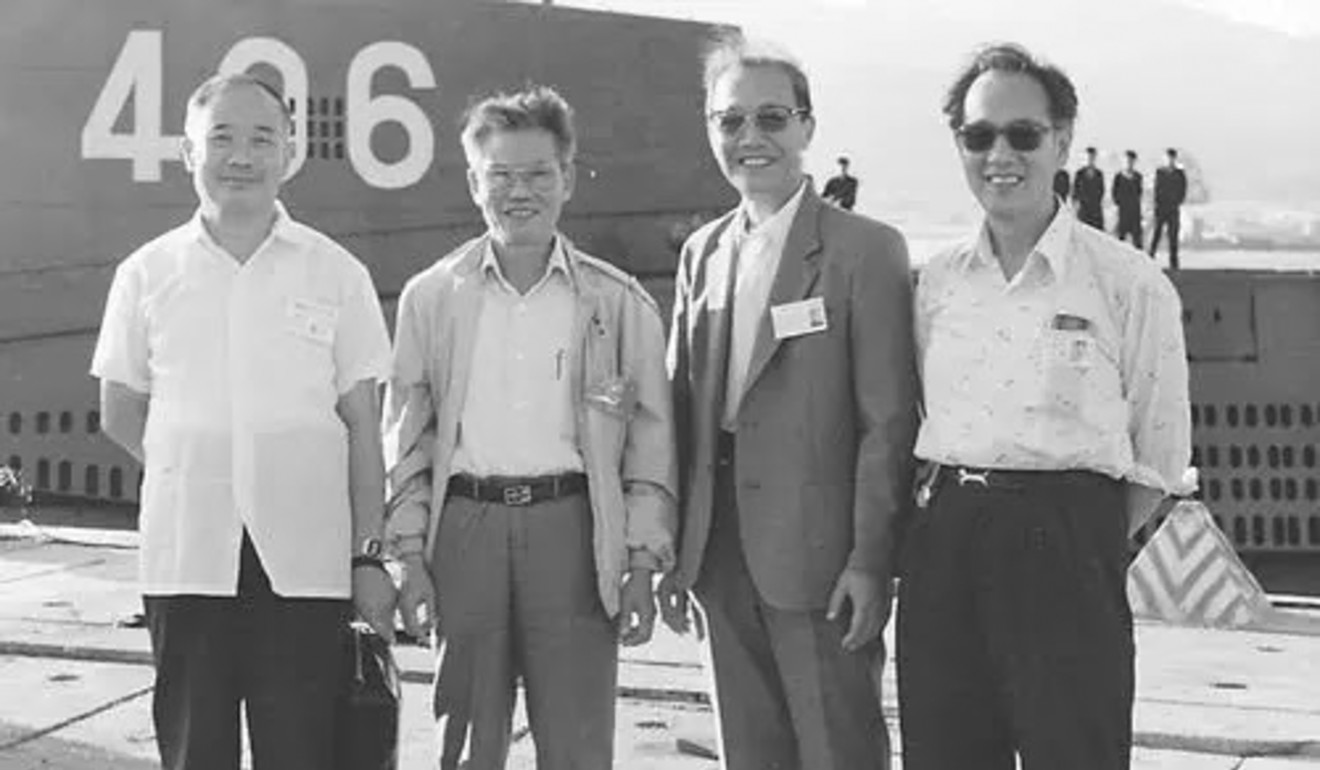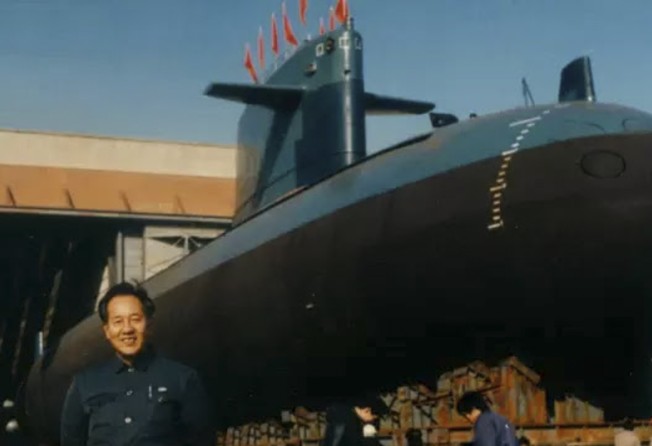
Top honour for 93-year-old engineer behind China’s first nuclear submarine
Huang Xuhua endured the deprivations of the Great Leap Forward and the Cultural Revolution to help realise a national ambition

For more than three decades, Huang Xuhua was little known beyond the small team of researchers he worked with to design China's first nuclear submarine.
But on Friday Huang was one of 600-plus people honoured at the Great Hall of the People in Beijing for his contribution as an “ethical worker”.
The 93-year-old engineer was thrust into the spotlight when President Xi Jinping invited Huang to sit next to him for a group photo, state media reported.
It was a mark of recognition of the value of his work but the Wuhan Evening News quoted Huang as saying that he preferred to remain low profile.
Now emeritus director of China Shipping Building Industry Corporation’s Second Ship Design Institute, also known as the No 719 Research Institute, in Wuhan, Huang joined the 29-member team selected to develop China’s first nuclear submarine in 1958.
The project was launched to bolster China’s nuclear deterrence against the West, as well as the Soviet Union after Beijing and Moscow fell out over an ideological dispute.
Huang told the state-owned Xinhua Daily Telegraph last year that military leader Nie Rongzhen suggested to Mao Zedong that China should have its own vessels “to break through the monopoly on nuclear submarine technology held by the United States and the Soviet Union”.
At the time, nobody in China knew much about the technology and there was little prospect of help from the outside world. China was also in the depths of a famine brought on by the Great Leap Forward.
But Mao reportedly liked the idea and urged the military to give it a try “even if it would take 10,000 years”.

Huang said he and his colleagues used what scant resources they had to come up with a design on paper. They used abacuses to do the calculations and scoured overseas newspapers for information on developments in the area. Based in Huludao, in Liaoning province on the Bohai Sea, the team worked around the clock to resolve key issues, including the vessel’s power, communications and life-support systems, the Xinhua Daily Telegraph reported.
The team’s work was validated unexpectedly when a Chinese diplomat brought two toy models of George Washington-class submarines from the United States. Huang was “extremely happy” when he found that the designs of the models were almost the same as those the Chinese had drafted on paper, the report said.
Work continued during the Cultural Revolution, the decade of turmoil when intellectuals were frequent targets of attack. Huang said he was denounced by day and worked in his office by night, the Xinhua Daily Telegraph reported.
For two years though, the engineer was sent to the countryside to farm pigs.
“That’s the only easy time of my life,” he said. “I had no responsibilities and no burdens. [All I needed to do] was to take good care of the pigs.”
In 1970, China’s first nuclear-powered submarine underwent maritime tests and in 1974, the vessel, named the Long March No 1, was commissioned, making China the fifth nation, after the US, the Soviet Union, Britain and France, to have a nuclear submarine.

But there was a personal price to pay. Huang’s wife and three daughters followed him on his postings but his highly classified mission meant he was able to maintain only sporadic contact with his parents in Guangdong province.
“Given the job I did, [I had] to make family ties less of a priority,” Huang recalled in the Xinhua Daily Telegraph report. “They always asked me what I did, but how could I tell them?”
In 1987, a Chinese magazine published a long report about the unknown names behind China’s development and referred to Huang as the chief designer of China’s nuclear submarine project.
His mother read the report and soon understood why her son had rarely made it home in the previous 30 years.